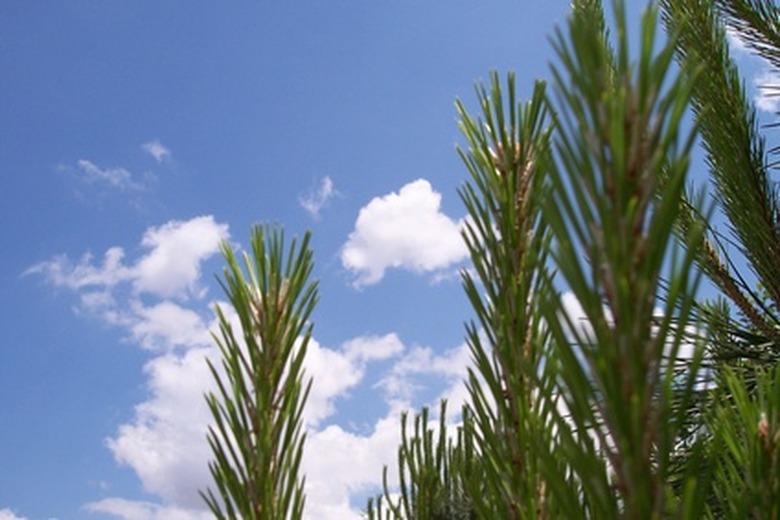How To Remove Small Pine Trees
Ninety percent of a pine tree's roots are in the top 3 feet of soil. Despite this, removing small pine trees from your landscape can be a difficult prospect. Pine trees develop a tap root that can extend quite deep into the soil. Attempts to dig a pine tree out of the ground can lead to suckers, which are pine seedlings that spring from the roots of distressed pine trees. The best method to kill a small pine tree depends on its size.
Step 1
Measure the girth of a pine tree's trunk with calipers to determine the best method to remove the tree.
Step 2
Mow down pine seedlings with trunks that are less than ½ inch wide. Frequent mowing will eventually kill pine tree seedlings.
- Ninety percent of a pine tree's roots are in the top 3 feet of soil.
- Measure the girth of a pine tree's trunk with calipers to determine the best method to remove the tree.
Step 3
Cut down pine saplings with trunks smaller than 2 inches in diameter with branch loppers. Spray the cut tree trunks with a systemic herbicide containing glyphosate to kill the tree's roots and prevent the re-emergence of sucker trees.
Step 4
Saw through tree trunks that are less than 5 inches in diameter with a saw. Spray the cut tree trunk with a systemic herbicide.
Step 5
Cut a V-shaped notch with an axe one-quarter of the way through the trunk of a pine tree with a 5-inch or larger diameter trunk. This notch should point in the direction that the pine tree will fall.
Step 6
Make a second cut horizontally straight through the trunk of the tree starting on the side opposite of the V notch and slightly higher than the point of the notch. Pull the axe free as the tree begins to fall. Spray the remaining tree stump with a systemic herbicide.
- Cut down pine saplings with trunks smaller than 2 inches in diameter with branch loppers.
- Spray the cut tree trunks with a systemic herbicide containing glyphosate to kill the tree's roots and prevent the re-emergence of sucker trees.
Pine Trees
They raise their branches to the sky in fields, front yards and other sun-soaked places around the world. They require little water and well-drained, preferably sandy soil. They can live well over 100 years, and some have even been found that are thousands of years old, such as the bristlecone pine that thrives in Nevada's Great Basin National Park. The branches of the pine tree grow laterally from a straight trunk that's covered in bark. Some pine tree species produce just one whorl of distinct branches a year that butts against the tip of the new shoot. The woody plants that become the towering trees that populate cities, forests and national parks across the country are beneficial to the environment as well as commerce. Pine parts are also used for the manufacturing of substances such as pulp and paper, rosin and the cleaning agent turpentine.
- They raise their branches to the sky in fields, front yards and other sun-soaked places around the world.
- They can live well over 100 years, and some have even been found that are thousands of years old, such as the bristlecone pine that thrives in Nevada's Great Basin National Park.
Pine Trees
They raise their branches to the sky in fields, front yards and other sun-soaked places around the world. They require little water and well-drained, preferably sandy soil. They can live well over 100 years, and some have even been found that are thousands of years old, such as the bristlecone pine that thrives in Nevada's Great Basin National Park. The branches of the pine tree grow laterally from a straight trunk that's covered in bark. Some pine tree species produce just one whorl of distinct branches a year that butts against the tip of the new shoot. The woody plants that become the towering trees that populate cities, forests and national parks across the country are beneficial to the environment as well as commerce. Pine parts are also used for the manufacturing of substances such as pulp and paper, rosin and the cleaning agent turpentine.
- They raise their branches to the sky in fields, front yards and other sun-soaked places around the world.
- They can live well over 100 years, and some have even been found that are thousands of years old, such as the bristlecone pine that thrives in Nevada's Great Basin National Park.
Things Needed
- Calipers
- Lawn mower
- Branch loppers
- Systemic herbicide containing glyphosate
- Saw
- Axe
